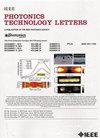基于自编码器网络的光子能带传输谱预测
IF 2.3
3区 工程技术
Q2 ENGINEERING, ELECTRICAL & ELECTRONIC
引用次数: 0
摘要
光学拓扑绝缘体作为一种新兴的光子材料,在光通信领域具有重要的应用价值。深度学习先进的模式识别能力使拓扑光子结构的逆设计成为一个研究热点。然而,现有的方法在分析复杂的能带结构时遇到困难。因此,我们构建了一个能够处理二维光子能带数据的深度学习模型。利用自编码器网络,我们的模型通过将光子能带和透射谱转换成特征编码来间接训练光子能带和透射谱。它集成了透射谱自编码器和光子能带自编码器,通过处理能带数据来预测相应的透射谱。结果表明,与卷积神经网络(CNN)相比,我们的模型可以准确预测传输频谱,并且在RMSE和R2的评估指标上表现更好。这项工作通过利用能带图来约束光学性质来提高预测精度。本文章由计算机程序翻译,如有差异,请以英文原文为准。
Prediction of Transmission Spectrum From Photonic Energy Band via Autoencoder Network
Optical topological insulators, as an emerging type of photonic material, present substantial benefits for optical communication. The advanced pattern recognition capabilities of deep learning have propelled the inverse design of topological photonic structures into a hot area of research. However, existing methods encounter difficulties with the analysis of intricate band structures. Therefore, we construct a deep learning model capable of handling two-dimensional data of photonic energy band. Utilizing an autoencoder network, our model indirectly trains the photonic energy band and transmission spectrum, by converting them into feature coding. It integrates a transmission spectrum autoencoder and a photonic energy band autoencoder, processing energy band data to predict the corresponding transmission spectrum. The results indicate that compared to convolutional neural network (CNN), our model can accurately predict transmission spectrum, and perform better on both evaluation metrics of RMSE and R2. This work enhances prediction accuracy by leveraging energy band diagrams to constrain optical properties.
求助全文
通过发布文献求助,成功后即可免费获取论文全文。
去求助
来源期刊

IEEE Photonics Technology Letters
工程技术-工程:电子与电气
CiteScore
5.00
自引率
3.80%
发文量
404
审稿时长
2.0 months
期刊介绍:
IEEE Photonics Technology Letters addresses all aspects of the IEEE Photonics Society Constitutional Field of Interest with emphasis on photonic/lightwave components and applications, laser physics and systems and laser/electro-optics technology. Examples of subject areas for the above areas of concentration are integrated optic and optoelectronic devices, high-power laser arrays (e.g. diode, CO2), free electron lasers, solid, state lasers, laser materials'' interactions and femtosecond laser techniques. The letters journal publishes engineering, applied physics and physics oriented papers. Emphasis is on rapid publication of timely manuscripts. A goal is to provide a focal point of quality engineering-oriented papers in the electro-optics field not found in other rapid-publication journals.
 求助内容:
求助内容: 应助结果提醒方式:
应助结果提醒方式:


